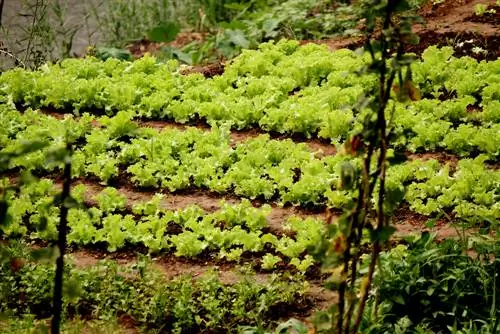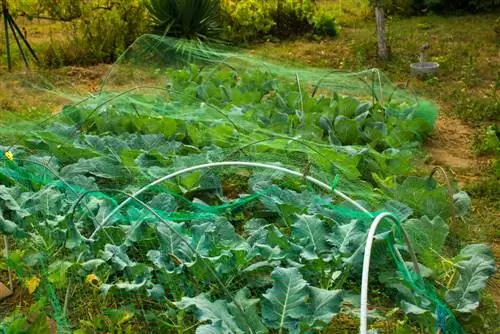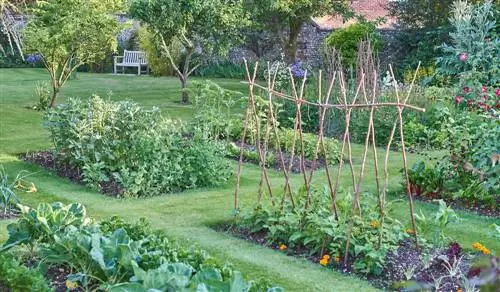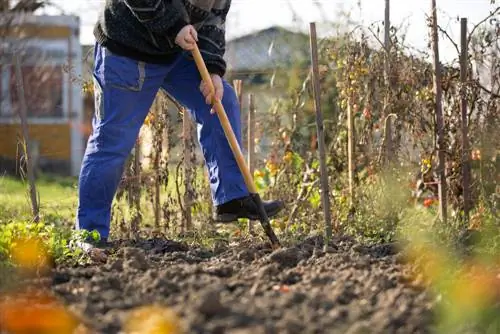- Author admin [email protected].
- Public 2023-12-16 16:46.
- Last modified 2025-01-23 11:21.
Creating and planting a vegetable patch on a slope can be a bit of a challenge. However, these beds look extremely attractive and, in addition to their pure utility, also have a high decorative value. You can find out how to do this in the following article.
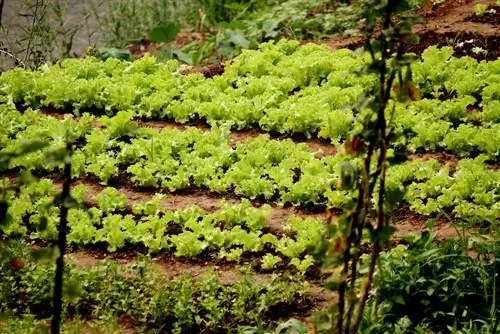
How do you create a vegetable patch on a slope?
In order to create a vegetable patch on a slope, preparatory earthwork, slope stabilization and terracing are required. Plan terraces about 1.50 meters deep and plant sun-loving herbs on the upper levels, while tall-growing vegetables are placed on deeper levels.
The earthworks
Depending on whether your property is along or across the side of the slope, preparatory earthwork is required before the vegetable bed is created. If the slope is relatively steep, slope stabilization is necessary first. Concrete foundations or support elements provide the necessary support.
Terancing creates flat steps with a straight surface that can be easily planted. In addition, the risk of soil erosion is averted by this measure. Since this work is not easy to carry out, you should consult a specialist for this.
Depending on the angle of inclination, additional stairs must be installed from which the paths branch off. Include future irrigation in your planning, as carrying heavy watering cans up many stairs is extremely strenuous. The compost should also be easy to reach.
Planting the vegetable patch
There are a few points to consider here that do not need to be taken into account in the “normal” vegetable patch:
- Sun-hungry herbs should be planted on the upper terrace levels. Mediterranean spices in particular cope well with the somewhat drier conditions there.
- Place high-growing vegetables such as beans or cucumbers on a lower terraced field. They would unintentionally shade the terraces below.
- Plan terraces with a depth of around 1.50 meters. This ensures that you can easily reach the center from both sides.
- Sometimes the climatic conditions on slopes are not optimal because, depending on the orientation, they differ greatly from a conventional vegetable patch. Therefore, first grow proven vegetables that are native to our latitudes. This can avoid frustration.
Tip
Planting vegetable beds on slopes is only worthwhile where there is sufficient sunlight. Vegetable plants need a lot of light to thrive and produce bountiful harvests.

